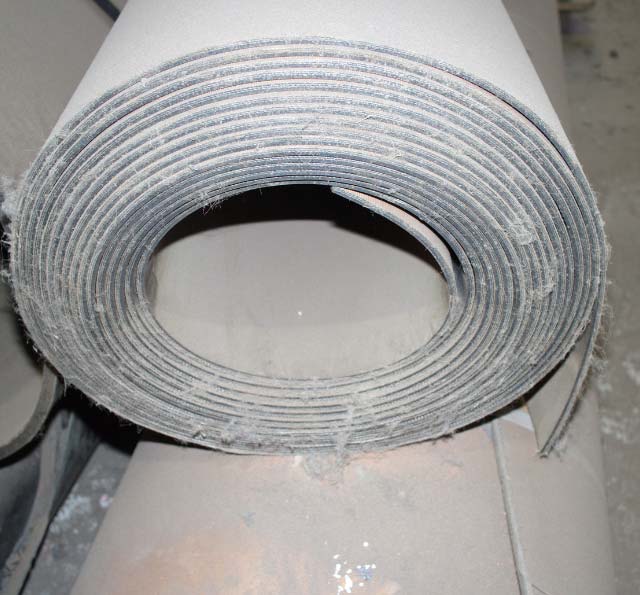Pre-shipment inspection of industrial belts and conveyors is a crucial step in ensuring the smooth functioning and reliability of this essential equipment in industrial settings. By employing the expertise of professional inspectors, businesses can benefit from an unbiased assessment of the products before they are shipped. These experienced inspectors thoroughly examine the industrial belts and conveyors, checking for any defects, subpar materials, or deviations from specified requirements. By doing so, they verify the product's compliance with industry standards and regulatory requirements, mitigating the risk of potential issues and preventing costly downtimes caused by damaged or non-compliant equipment. Ultimately, a pre-shipment inspection provides businesses with the peace of mind that their investment is protected, and they can confidently deploy industrial belts and conveyors for efficient material handling operations.
Why choose us to get your industrial belts and conveyors inspected?
- You don't have to search for inspectors. We save you time as we have a global footprint with hundreds of inspectors waiting for your requests.
- You are not at the mercy of the industry. You are in full control of the process with tools like defining the timeframe for inspections, assigning deadlines for the report submissions.
- You are not limited. You can appoint multiple inspectors in multiple countries to inspect multiple specifications.
- Experts at your fingertips. Our inspectors have experience and a proven track records inspecting belts and conveyors.
- Global reach. Any industry, any product, anywhere, anytime, inspexion.com has you covered.

When it comes to the smooth functioning of industries, industrial belts and conveyors play a pivotal role in ensuring efficient material handling. As a prudent business owner or procurement manager, you understand the importance of investing in high-quality equipment. However, even with the most reputable suppliers, there's always room for human error. To safeguard your investment and maintain operational excellence, a pre-shipment inspection by an experienced inspector is a wise choice.
Inspector advantages:
Unbiased Assessment
One of the key advantages of hiring a professional inspector for pre-shipment inspections is their unbiased assessment. No matter how reliable your supplier is, mistakes can happen. An independent inspector brings a fresh set of eyes to the evaluation process, ensuring that all aspects of the industrial belts and conveyors are thoroughly examined. Their objective viewpoint ensures that the product delivered matches your expectations and complies with the specified quality standards.
Industrial belts and conveyors are subjected to constant wear and tear, which makes their quality and safety features critical for smooth operations. An experienced inspector possesses comprehensive knowledge of industry standards and regulatory requirements, both national and international. They will meticulously inspect each component, checking for any defects, subpar materials, or inadequate workmanship. By identifying potential issues beforehand, you can prevent costly downtimes and avoid non-compliance penalties.
Verification of SpecificationsVerifying that the industrial belts and conveyors match the specified requirements is paramount. From the dimensions and load capacity to material quality and safety features, an inspector ensures that the product adheres to the agreed-upon specifications. This verification process gives you the assurance that you are receiving exactly what you paid for, reducing the risk of post-shipment disputes with the supplier.
Damage PreventionShipping and handling of industrial equipment can be rigorous, especially during long-distance transportation. Even minor damages can significantly affect the performance and lifespan of belts and conveyors. By employing an inspector to examine the equipment before shipment, you can spot any damages incurred during the manufacturing process or while in storage. This allows you to address the issues with the supplier and arrange for repairs or replacements, avoiding potential breakdowns once the equipment is in use.
Cost-EffectivenessWhile some may view hiring an inspector as an added expense, it is, in fact, a cost-effective investment. By identifying potential defects and issues before shipment, you can avoid costly repairs and replacements down the line. Moreover, you'll save on downtime and labour costs, as the equipment will be delivered in optimal condition, ready for immediate use.
An inspector conducting a pre-shipment inspection of industrial belts and conveyors would typically employ various methods and techniques to ensure a comprehensive evaluation. Here's a list of some common methods used during the inspection process:
Visual Inspection: A thorough visual examination is the first step, where the inspector checks for any visible defects, damages, or irregularities on the industrial belts and conveyors.Measurement and Dimensional Checks: Precise measurements are taken to verify if the dimensions of the equipment match the specified requirements.
Material Analysis: The inspector may perform material analysis to ensure that the components are made from the specified materials, as this directly impacts the equipment's performance and durability.
Load Testing: Load testing is conducted to assess the equipment's load-carrying capacity and determine whether it meets the designated weight requirements.
Functionality Testing: The inspector will check the belts and conveyors' functionality to ensure they operate smoothly and meet the intended performance standards.
Noise and Vibration Assessment: Noise and vibration levels are measured to identify any abnormal sounds or excessive vibrations that could indicate potential issues.
Safety Checks: Safety features such as emergency stop mechanisms and safety guards are examined to verify compliance with safety regulations.
Inspection of Welds and Joints: Welds and joints are scrutinized to ensure they meet quality standards and won't pose structural weaknesses.
Lubrication Analysis: The inspector may analyse the lubrication systems to ensure proper functioning and assess whether maintenance is required.
Environmental Tests: If required, the belts and conveyors may undergo environmental testing to determine their suitability for specific operating conditions, such as extreme temperatures or corrosive environments.
Documentation Review: The inspector will review documentation, such as manufacturing records and quality control reports, to verify the product's history and compliance.
Packaging Inspection: Packaging is assessed to ensure that it adequately protects the equipment during transportation and prevents damage.
By utilizing these methods and techniques, the inspector can provide a comprehensive and reliable assessment of the industrial belts and conveyors, giving businesses the confidence, they need in the quality and functionality of their purchased equipment.
Our Current Presence

600
Registered QC Companies

165000
Available Manpower

90
Countries we have presence











